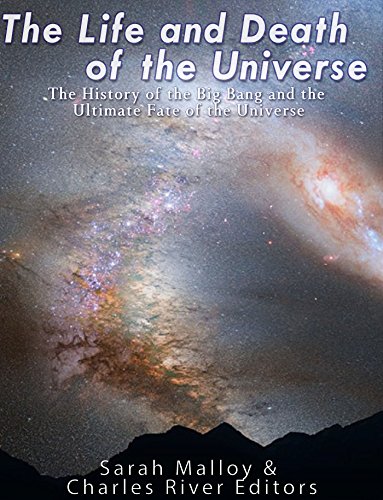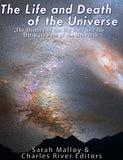The Life and Death of the Universe: The History of the Big Bang and the Ultimate Fate of the Universe
ISBN: 9781985649095
$6.99
*Inclues pictures
*Includes a bibliography for further reading
*Includes a table of contents
Many of us on Earth live in a home with a street address, city, and zip code. But we have another address, which astronomers and astrophysicists refer to as our “cosmic address”: Earth, Solar System, Milky Way, Local Group, Virgo Supercluster, the Universe. Consider the vast scales that our cosmic address spans. Understandably, it’s hard for our brains to truly imagine it. Our galaxy, The Milky Way, is populated with somewhere between 100-400 billion stars, one of which is our Sun, an average, run-of-the-mill star. The nearest star to us is Proxima Centauri at a distance of 4.2 light years or almost 4×10^13 kilometers. A light year is a measure of distance that it takes a photon (particle of light) to travel in a year, assuming it is traveling in the vacuum of space. So, it takes light 4.2 years to travel from Earth to Proxima Centauri and it would take a space shuttle about 160,000 years to get there, assuming our shuttle was traveling at a little over 4,000 miles per her. Considering that traveling to our nearest stellar neighbor is well outside of our technological capabilities and it would take more than 1600 times a human lifespan to get there, space travel either to or from other habitable planets is extremely improbable in the near future.
*Includes a bibliography for further reading
*Includes a table of contents
Many of us on Earth live in a home with a street address, city, and zip code. But we have another address, which astronomers and astrophysicists refer to as our “cosmic address”: Earth, Solar System, Milky Way, Local Group, Virgo Supercluster, the Universe. Consider the vast scales that our cosmic address spans. Understandably, it’s hard for our brains to truly imagine it. Our galaxy, The Milky Way, is populated with somewhere between 100-400 billion stars, one of which is our Sun, an average, run-of-the-mill star. The nearest star to us is Proxima Centauri at a distance of 4.2 light years or almost 4×10^13 kilometers. A light year is a measure of distance that it takes a photon (particle of light) to travel in a year, assuming it is traveling in the vacuum of space. So, it takes light 4.2 years to travel from Earth to Proxima Centauri and it would take a space shuttle about 160,000 years to get there, assuming our shuttle was traveling at a little over 4,000 miles per her. Considering that traveling to our nearest stellar neighbor is well outside of our technological capabilities and it would take more than 1600 times a human lifespan to get there, space travel either to or from other habitable planets is extremely improbable in the near future.




